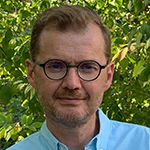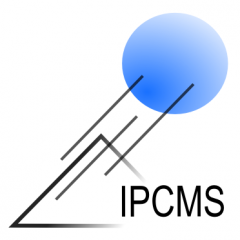
Research background
Stéphane Bellemin-Laponnaz studied chemistry at Université Joseph Fourier (Grenoble) and Université Louis Pasteur (Strasbourg). In 1994, he joined the group of Prof. John A. Osborn at Université Louis Pasteur to obtain his doctorate in 1998 studying the chemistry of oxo compounds. In 1999, he became a member of the group of Prof. Gregory C. Fu at Massachusetts Institute of Technology (Cambridge, MA) as a postdoctoral fellow working on kinetic resolution and phosphametallocene chemistry. In late 2000, he joined the group of Prof. Lutz H. Gade at Université Louis Pasteur (currently at University of Heidelberg) as a CNRS researcher and recently moved to the Institut de Physique et Chimie des Matériaux de Strasbourg as CNRS Director of Research. He is also Scientific Advisor to INEO TECH and President of the Coordination Chemistry Division of the French Chemical Society.
Awards
1998 ADRERUS Thesis Prize
2005 CNRS Bronze Medal
2009 Coordination Chemistry Prize from the French Chemical Society
2013 Sandmeyer Prize from the Swiss Chemical Society
2013 USIAS Fellow
2023 International Organic Chemistry Foundation Lectureship, Japan
2023 Jean Tirouflet Lectureship, University of Burgundy
2023 Chemistry Europe Lectureship, 8th EuChems Conference on Nitrogen Ligands
Current research
Asymmetry in molecular chemistry (nonlinear effect): This topic focuses on nonlinear effects in catalysis and their implications for understanding reaction mechanisms and asymmetric amplification phenomena. In 2020, an experimental result that was considered irrational at the time led us to discover a case where a quasi-racemic catalyst gives a higher enantiomeric excess than that obtained with an enantiopure catalyst (Nat. Cat. 2020). These observations led to mechanistic studies and new models explaining previously unexplained phenomena (Chem. Sci. 2020). To assess their scope, we are now exploring more complex catalytic systems, illustrating that asymmetric catalysis is a matter of systems chemistry (Nat. Synth. 2024, ChemistryEurope 2025).
Chirality and dynamic materials: A property of a biological system can emerge from the dynamic and reversible interaction between simpler, integrated components capable of responding to stimuli. Nature exploits chirality in particular to promote efficient recognition processes. Inspired by these principles, we use metals associated with simple chiral ligands to induce controlled self-assembly (EurJIC 2024). These systems can thus form metallopolymers capable of reorganizing in response to external stimuli (Chem. Commun. 2020).
Therapeutic organometallic agents for fighting cancer: Recently, transition metal complexes stabilized by N-heterocyclic carbene (NHC) ligands have shown strong anticancer potential. However, true preclinical development requires modular synthesis to design functionalized or conjugated complexes, promoting molecular diversity and the identification of promising cytotoxic compounds. In recent years, we have developed several simple functionalization strategies for platinum complexes (EurJIC 2020). We are now able to target specific types of cancer, such as glioblastoma, for which current treatment remains inadequate, with a median survival of less than 16 months due to resistance, particularly related to cancer stem cells (Int. J. Pharmaceut. 2023, RSC Med. Chem. 2025).
Publications
ORCID Link:
Patent link:


